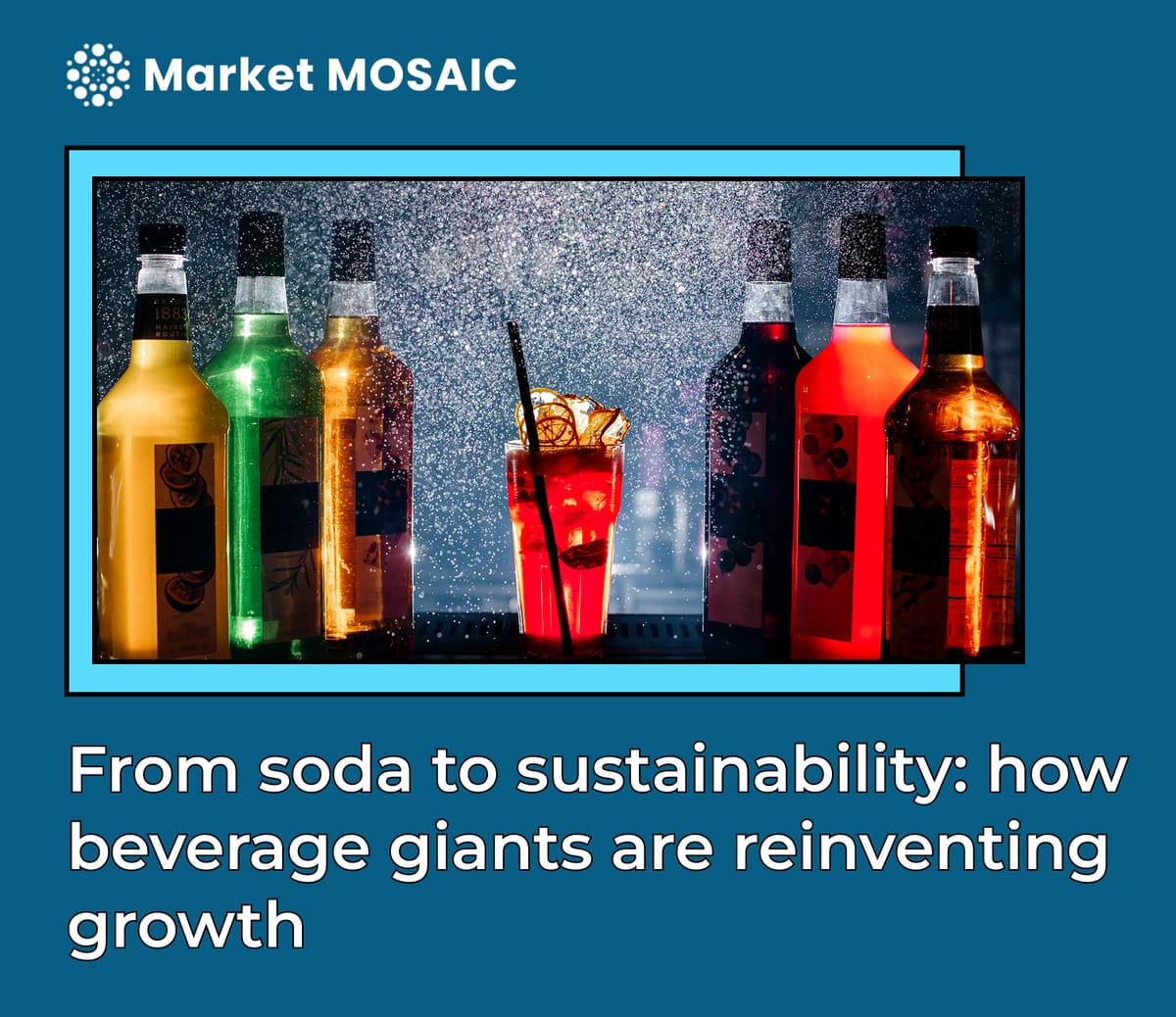From soda to sustainability: how beverage giants are reinventing growth

In an era defined by shifting consumer values and economic uncertainty, global beverage leaders are reimagining what it means to quench thirst. It's no longer just about distribution power or catchy advertising, today's winning formula blends premium experiences, sustainability, and agile supply chains.
And the stakes are enormous. The global beverage market is led by giants like Coca-Cola ($312.09B), Kweichow Moutai ($267.38B), and PepsiCo ($185.52B), each navigating a complex cocktail of rising consumer expectations and operational disruption.
The billion-case balancing act
With over 33.3 billion drink cases sold annually, Coca-Cola remains the undisputed distribution juggernaut. Its presence in more than 200 countries proves how scale still matters. But scale alone is no longer enough. Nearly 50% of its revenue still comes from sparkling soft drinks, while just 20% comes from diversified beverages, a stark signal that health-conscious consumers are pushing for change.
To stay relevant, the company is rebalancing its portfolio expanding its reach in hydration, plant-based drinks, and functional beverages. This move reflects a broader truth: consumers are not just drinking, they’re deciding. Taste, wellness, ethics, and brand story now matter as much as refreshment.
Premiumization is not just a trend, but a strategy
Nowhere is the shift toward premium clearer than in China’s Kweichow Moutai. Best known for its heritage baijiu spirit, the brand has grown 16% by embracing premium innovation, launching alcohol-infused ice cream and coffee that attract younger, experience-driven consumers. Moutai’s strategy exemplifies a growing global pattern: people are willing to pay more for products that blend tradition with novelty, especially when backed by authenticity.
This premiumization push isn’t limited to spirits. Energy drink titan Monster, with $7.49B in annual sales, is also targeting high-performance, high-margin SKUs that speak to lifestyle tribes from athletes to gamers. Even Starbucks, with 4 billion cups sold each year, is capitalizing on the “third space” experience and introducing exclusive product tiers in growth markets.
Cost centers to competitive edge
Behind every premium sip is a reengineered supply chain. What once focused on efficiency now must deliver speed, transparency, and sustainability. Companies are investing in digitization and nearshoring not just to control costs, but to meet real-time demand shifts and regulatory complexity.
Environmental concerns are pushing packaging innovation as well. From recyclable energy drink cans to biodegradable coffee cups, major brands are rethinking materials at scale. But transformation comes with risk balancing cost inflation, raw material volatility, and ESG scrutiny is now part of every supply chain leader’s playbook.
Localization, too, is reshaping strategies. In emerging markets, nimble distribution and culturally aligned flavors increasingly trump global brand recognition. To win, companies must think global but source and sell locally, a delicate act that requires data-driven demand sensing and strategic partnerships on the ground.
What business leaders should take away
For founders and C-suite leaders watching from adjacent industries, the beverage sector offers a powerful case study. Premiumization isn’t just about luxury, it’s a strategic response to rising consumer discernment. Sustainability isn’t a PR move, it's a supply chain imperative. And localization isn’t fragmentation, it's the new frontier of competitive advantage.
Legacy brands that move slowly risk losing relevance. But those willing to adapt portfolios, digitize operations, and localize intelligently can unlock both margin growth and market loyalty.





